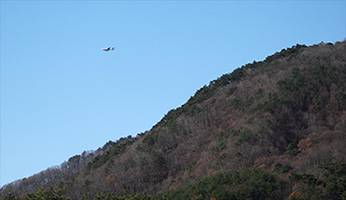Research & Development
JAXA promotes three research and development programs and a fundamental research program that underpins them.
Unmanned Airplane for Radiation Monitoring System (UARMS)
JAXA conducts flight tests on the UARMS Unmanned Airplane at Fukushima Sky Park
On November 27 and 28, 2014, JAXA conducted flight tests on the UARMS Unmanned Airplane at Fukushima Sky Park in Fukushima, Fukushima Prefecture.
Compared to the first prototype that JAXA has already developed and demonstrated, the current version UARMS has approximately six hours enudurance. It also features a terrain-following flight control function that allows it to fly at a constant distance from the ground in order to ensure that the aircraft can detect radiation at high levels of precision. JAXA has also improved the redundancy of the aircraft system, thereby enabling even safer flight, and given the aircraft new features like a return-to-base (RTB) function, which makes it possible for the aircraft to return automatically to its home base in the event of a single malfunction such as communication failure. The aircraft is also equipped with an updated version of the Japan Atomic Energy Agency’s radiation distribution measurement system, which helps unmanned aircraft obtain more precise readings when even in bank maneuvers.
The mountainous area surrounding Fukushima Sky Park features more rugged terrain than the topographical conditions around the Taiki Aerospace Research Field and Shikabe Airport, which JAXA has used for many flight tests. Taking advantage of the environment that Fukushima Sky Park provides, JAXA confirmed that the aircraft was able to improve its radiation measurement precision by modifying its altitude based on topographical changes.


January 19, 2015